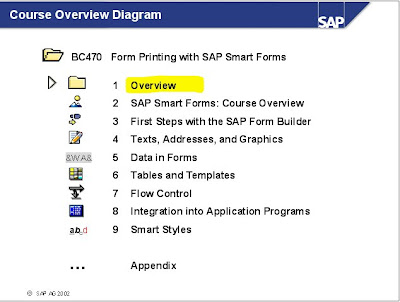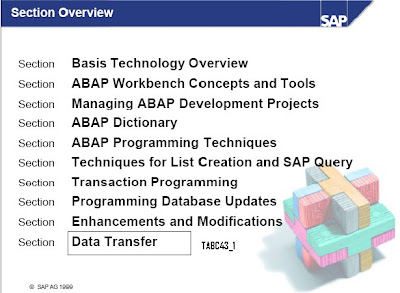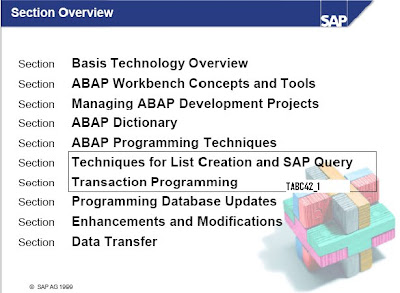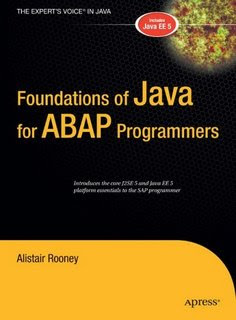Across the Region, Leading Businesses of All Sizes Power Business Strategy by Choosing SAP
ATLANTA - April 20, 2007 - Showcasing its growing presence in the region and the depth of its solutions to serve businesses of diverse size and industry requirements, SAP AG (NYSE: SAP) today announced that increasing numbers of Atlanta-area companies are leveraging SAP software for ongoing innovation, more efficient operations and sustainable growth. In addition to expanding relationships with established customers across the region, SAP and its partners have added new customers—from small businesses and midsize companies to global industry leaders—to the hundreds of companies and thousands of end users running SAP software in the Atlanta area. The announcement was made on the eve of SAPPHIRE® ’07, SAP’s international customer conference, being held from April 23 – 25, for the first time in Atlanta, Georgia.
Atlanta companies ranging from The Coca-Cola Company, Coca-Cola Enterprises, Georgia-Pacific and The Home Depot, to Checkfree, Dhaksha Technologies, Gwinnett County, MacGregor Golf, and a growing number of small businesses including Structural Products Corporation, Georgia State Floral Distributors and Industriaplex, are among the area businesses which have expanded or established new relationship with SAP in recent quarters by deploying SAP applications. The growth in SAP’s local customer base comes as SAP delivers the benefits of solutions designed on the business-driven blueprint of enterprise service-oriented architecture (enterprise SOA) to companies across the globe, and at an inflection point in the transition to SOA, an architecture that enables software functions, or “services,” to be combined quickly and flexibly to perform new business processes.
MacGregor Golf Drives with SAP
MacGregor Golf, a leading designer and manufacturer of golf equipment, completed an implementation of ARIS SmartPath for Durable Goods, an IDS Scheer offering of SAP® All-in-One software bundled with ARIS Reference Models and SAP implementation services. Working with SAP partner IDS Scheer, MacGregor Golf has improved its customer order entry system and begun to take advantage of lean manufacturing practices. The solution will also be rolled out to the company’s offices in Japan and the United Kingdom.
“MacGregor Golf is one of the oldest golf companies in the world with 109 years of tradition, innovation and product excellence,” said Jay Verenakis, chief information officer, MacGregor Golf. “With the deployment of ARIS SmartPath for Durable Goods, based on SAP All-in-One, we are now in position to better serve our customers and realize business process efficiencies.”
Local Small Businesses Drive Efficiency, Customer Service with SAP
A premier provider of retail, commercial and industrial infrastructure products and services, Industriaplex manages international supply chain logistics required to plan for and respond to the needs of its customers. As a startup that rapidly outgrew Peachtree and spreadsheet applications, Industriaplex first implemented SAP® Business One with SAP partner ASE to manage financials, standard light manufacturing, and standard sales order processes. To support its ongoing business strategy, Industriaplex next worked with ASE to integrate SAP Business One with a hosted facility management service from Corrigo so that call center and dispatch services can now programmatically feed SAP purchasing and goods receipt functions.
“With the solution from SAP, we have reduced our reliance on manual spreadsheets, taken complexities out of our business, achieved greater visibility and control,” said John Drake, general manager – IT, Industriaplex. “We are now postured to handle our rapid growth in our ever-changing marketplace.”
Based in Norcross, Ga., Structural Products Corporation (formerly Atlanta Structural Products) began servicing metro Atlanta’s engineered floor system needs in 1984, specializing in engineering, designing and selling engineered floor systems for residential construction. When the company outgrew homegrown IT systems, it looked for an integrated business management package that could provide visibility in a consolidated view of mission-critical across the company. It also looked for a solution that would allow the company to easily customize applications specific to the unique needs of its business.
“We evaluated several competing packages, including Great Plains, but none provided the integrated set of applications and straightforward pricing of SAP Business One,” said Jason Shehane, systems and logistics engineer, and leader of the SAP deployment at Structural Products, which implemented the solution working with the Baer Group, a local SAP partner. “The solution’s software development kit is easy to use and allows us to develop the custom applications we need to remain responsive to changing business challenges.”
Atlanta Companies Shine at SAPPHIRE ’07
The SAPPHIRE ’07 event will bring thousands of SAP users to Atlanta and feature presentations on hundreds of SAP customer companies. On Monday, April 23, 2007, SAP and The Coca-Cola Company will be hosting a media visit—for media registered for SAPPHIRE—at The Coca-Cola Company’s headquarters in Atlanta.
In addition to its growing local customer base and SAPPHIRE ’07 event, SAP Americas’ presence in the Atlanta area also extends to a variety of philanthropic activities and causes including cash and in-kind contributions to non-profit organizations and higher-education institutions in the state of Georgia. SAP’s local community partners in Atlanta include Hands on Atlanta, Hands on Network, Bobby Dodd Institute, Techbridge, Knowledge is Power Program (KIPP) and Habitat for Humanity.
“The Atlanta area is a thriving hub of commercial activity, recognized across the globe as an international destination and home to many of the world’s leading companies,” said Bill McDermott, president and CEO, SAP Americas and Asia Pacific Japan. “As we prepare to host thousands of SAP customers and partners in Atlanta at our 2007 SAPPHIRE conference, we are pleased to showcase our growing customer base and commitment to businesses across the region.”
Next Major Events: SAPPHIRE® ’07 Atlanta and SAPPHIRE® ’07 Vienna
Join SAP and its growing ecosystem of partners to discover how co-innovation and open technologies are enabling customers to do “business at the speed of change,” improving business processes, expediting time to market and outthinking and out-executing the competition. Learn first-hand how organizations of all sizes and industries around the world are using SAP® applications to accelerate innovation and energize growth at SAPPHIRE® ’07, SAP’s international customer conference, being held in Atlanta, Georgia, April 22-25, and in Vienna, Austria, May 14-16, 2007. For more information, please visit www.sap.com/sapphire.
This year, SAP and the Americas’ SAP Users’ Group (ASUG) are co-locating their premier events in Atlanta, where the 2007 ASUG Annual Conference takes place April 22-25.
Note to editors:
For free video content about SAP, please log onto www.thenewsmarket.com/sap to preview and request video. You can receive broadcast-standard video digitally or by tape from this site. Registration and video is free to the media.
About SAP
SAP is the world’s leading provider of business software*. Today, more than 39,400 customers in more than 120 countries run SAP® applications—from distinct solutions addressing the needs of small businesses and midsize companies to suite offerings for global organizations. Powered by the SAP NetWeaver® platform to drive innovation and enable business change, SAP software helps enterprises of all sizes around the world improve customer relationships, enhance partner collaboration and create efficiencies across their supply chains and business operations. SAP solution portfolios support the unique business processes of more than 25 industries, including high tech, retail, financial services, healthcare and the public sector. With subsidiaries in more than 50 countries, the company is listed on several exchanges, including the Frankfurt stock exchange and NYSE under the symbol “SAP.” (Additional information at <http://www.sap.com>)
Any statements contained in this document that are not historical facts are forward-looking statements as defined in the U.S. Private Securities Litigation Reform Act of 1995. Words such as “anticipate,” “believe,” “estimate,” “expect,” “forecast,” “intend,” “may,” “plan,” “project,” “predict,” “should” and “will” and similar expressions as they relate to SAP are intended to identify such forward-looking statements. SAP undertakes no obligation to publicly update or revise any forward-looking statements. All forward-looking statements are subject to various risks and uncertainties that could cause actual results to differ materially from expectations The factors that could affect SAP's future financial results are discussed more fully in SAP's filings with the U.S. Securities and Exchange Commission ("SEC"), including SAP's most recent Annual Report on Form 20-F filed with the SEC. Readers are cautioned not to place undue reliance on these forward-looking statements, which speak only as of their dates.
Copyright © 2007 SAP AG. All rights reserved.
SAP, R/3, mySAP, mySAP.com, xApps, xApp, SAP NetWeaver and other SAP products and services mentioned herein as well as their respective logos are trademarks or registered trademarks of SAP AG in Germany and in several other countries all over the world. All other product and service names mentioned are the trademarks of their respective companies. Data contained in this document serve informational purposes only. National product specifications may vary.
For customers interested in learning more about SAP products:
Global Customer Center: +49 180 534-34-24
United States Only: 1 (800) 872-1SAP (1-800-872-1727)
For more information, press only:
Jim Dever, SAP, +1 (610) 661-2161, james.dever@sap.com, EDT
SAP Press Office, +49 (6227) 7-46315, CET; +1 (610) 661-3200, EDT; press@sap.com
Torrey Fazen, Burson-Marsteller for SAP, +1 617 764 0146, torrey.fazen@bm.com, EDT






























 Publisher: Idea Group Publishing
Publisher: Idea Group Publishing








